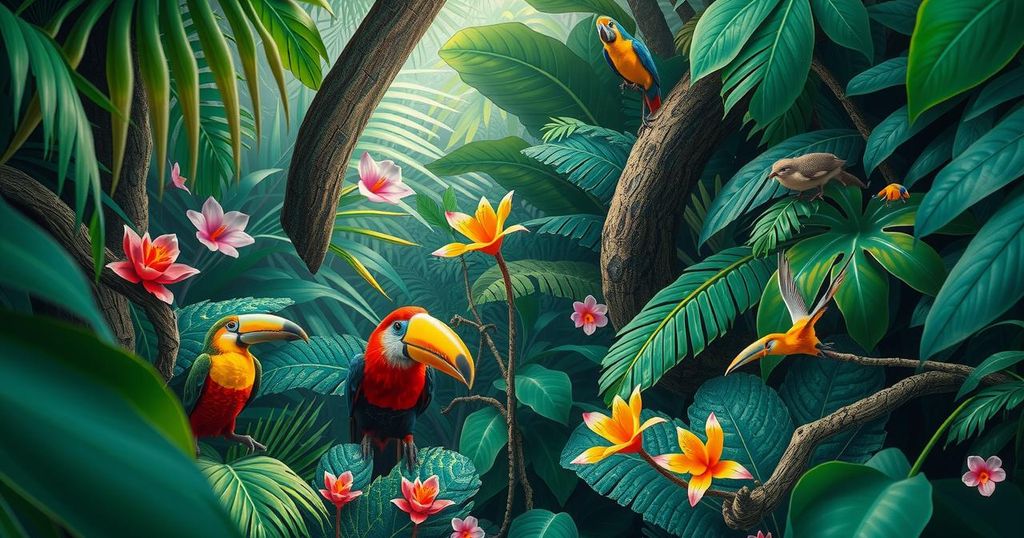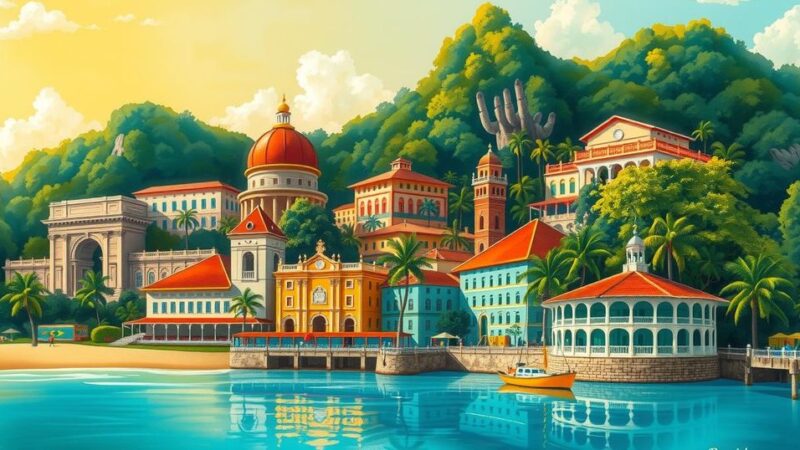Papua New Guinea is a megadiverse nation with rich ecosystems covering 73 million hectares, supporting 7% of the world’s species. Birds, including 779 species and the endemic Kumul, play a crucial role in culture and ecology. However, the threats of deforestation and climate change jeopardize this biodiversity, necessitating urgent conservation efforts and community involvement.
Papua New Guinea comprises a significant expanse of rainforest, covering 73 million hectares and featuring diverse ecosystems, including tropical forests, mountains, and coastlines. Covering approximately 1% of the Earth’s surface, it ranks as the third-largest rainforest globally, following the Amazon and Congo.
The country boasts remarkable biodiversity, hosting at least 7% of the world’s species, many of which are endemic. Within its rainforests, approximately 4,642 vertebrate species exist, accounting for nearly 8% of the global vertebrate population. A detailed examination of the bird species reveals that Papua New Guinea is home to over 779 bird varieties, including 108 that are endemic.
Birds hold a significant place in the cultural traditions of Papua New Guinea. The national bird, the Kumul, symbolizes the rich avian life and represents the deep connection the Papuans share with birds, reflected in various aspects of their culture such as rituals and art. The Hooded Pitohui, the first scientifically recognized toxic bird, demonstrates the mysteries of the local fauna still awaiting exploration.
Water birds like herons and ducks play vital ecological roles within the mangroves, rivers, and lakes of Papua New Guinea. They help regulate aquatic ecosystems by controlling fish populations and serve as crucial havens for seasonal migratory species.
Despite this rich biodiversity, Papua New Guinea faces significant challenges such as deforestation, resource overexploitation, and climate change. The IUCN Red List indicates that many animal species (4,315) in the region are threatened. In order to combat these issues, proactive measures are necessary, including enforcement of conservation laws and community-driven initiatives.
Integrating Indigenous knowledge with contemporary conservation strategies can yield substantial benefits for biodiversity preservation. Educational initiatives aimed at increasing public awareness regarding biodiversity are imperative. This column endeavors to highlight the urgency of preserving both the rich culture and ecological integrity of Papua New Guinea.
In summary, Papua New Guinea’s vast rainforests and unique ecosystems make it a megadiverse country of global importance. With exceptional biodiversity, notably in its avian populations, the nation also faces critical challenges that threaten its natural heritage. Addressing these challenges through conservation efforts and community engagement is essential for preserving biodiversity and the cultural significance tied to it.
Original Source: www.postcourier.com.pg






